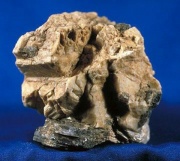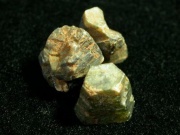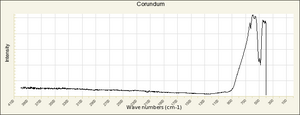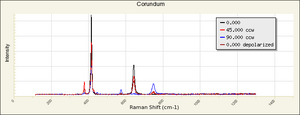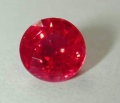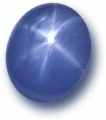Corundum
Description
A very hard, naturally occurring mineral composed of Aluminum oxide. Corundum is mined in Australia, South Africa, Zimbabwe, India, Russia, Rhodesia, Turkey, the United States and Canada (Ontario). The transparent to translucent stones are typically gray or brown with some deeply colored varieties. Transparent corundum stones have been used as gemstones since at least Hellenistic times. Rubies are transparent red corundum gems while transparent blue stones are called sapphires. Transparent yellow corundum is called Oriental topaz, the violet color is called Oriental amethyst and the green, Oriental emerald. Impure corundum, commonly called Emery, also contains Hematite, Magnetite, Silica and/or Magnesia. Emery is used as an abrasive. Artificial corundum has been produced on a very small scale by the Verneuil process.
(Corundum should not be confused with Carborundum)
Synonyms and Related Terms
emery (black); adamantine spar; ruby (red); sapphire (blue); Oriental topaz (yellow); Oriental amethyst (lavender); Oriental emerald (green); korund (Dan., Ned., Pol.); Korund (Deut.); corindon (Esp., Fr., Port.);
Risks
- Inhalation of dust may cause irritation.
- Fire retardant.
Physical and Chemical Properties
- Trigonal crystal system with tabular, prismatic, or pyramidal crystals
- Luster = vitreous to adamantine
- Fracture = conchoidal to uneven
- Streak = colorless
- Fluorescence = generally inert. Sapphires might fluoresce orange to red under LW. Heat treated stones may fluoresce green or appear chalky.
- Pleochroism = depends on color. Sapphires have moderate to strong yellowish-green, green, or bluish-green and bluish green to blue
- Natural stones contain microscopic mineral and fluid inclusions not seen in synthetic stones. Synthetic stones may have gas bubbles.
- Heat-treated stones may show clouds when examined under microscope
| Composition | Al2O3 |
|---|---|
| CAS | 1302-74-5 |
| Mohs Hardness | 9.0 |
| Density | 3.96-4.05 g/ml |
| Refractive Index | 1.761-1.769 |
| Birefringence | 0.008 - 0.010 |
Comparisons
Properties of Common Abrasives
Properties of Common Gemstones
Properties of Natural and Simulated Diamonds
Additional Images
Resources and Citations
- Gem Identification Lab Manual, Gemological Institute of America, 2016.
- Mineralogy Database: Corundum
- Jack Odgen, Jewellery of the Ancient World, Rizzoli International Publications Inc., New York City, 1982
- R.F.Symmes, T.T.Harding, Paul Taylor, Rocks, Fossils and Gems, DK Publishing, Inc., New York City, 1997
- Encyclopedia Britannica, http://www.britannica.com Comment: "corundum" [Accessed December 11, 2001]
- Website: http://www.geo.utexas.edu/courses/347k/redesign/gem_notes/Corundum/corundum_triple_frame.htm (Fluorescence information)
- C.W.Chesterman, K.E.Lowe, Audubon Society Field Guide to North American Rocks and Minerals, Alfred A. Knopf, New York, 1979
- Wikipedia: Corundum (Accessed Sept. 7, 2005 and Dec 2022)
- CRC Handbook of Chemistry and Physics, Robert Weast (ed.), CRC Press, Boca Raton, Florida, v. 61, 1980 Comment: density=3.9-4.0
- R. Mayer, The Artist's Handbook of Materials and Techniques, Viking Press, New York, 1981
- G.S.Brady, Materials Handbook, McGraw-Hill Book Co., New York, 1971 Comment: p. 244
- Richard S. Lewis, Hawley's Condensed Chemical Dictionary, Van Nostrand Reinhold, New York, 10th ed., 1993
- Michael McCann, Artist Beware, Watson-Guptill Publications, New York City, 1979
- R.M.Organ, Design for Scientific Conservation of Antiquities, Smithsonian Institution, Washington DC, 1968
- Van Nostrand's Scientific Encyclopedia, Douglas M. Considine (ed.), Van Nostrand Reinhold, New York, 1976
- Random House, Webster's Encyclopedic Unabridged Dictionary of the English Language, Grammercy Book, New York, 1997
- The American Heritage Dictionary or Encarta, via Microsoft Bookshelf 98, Microsoft Corp., 1998
